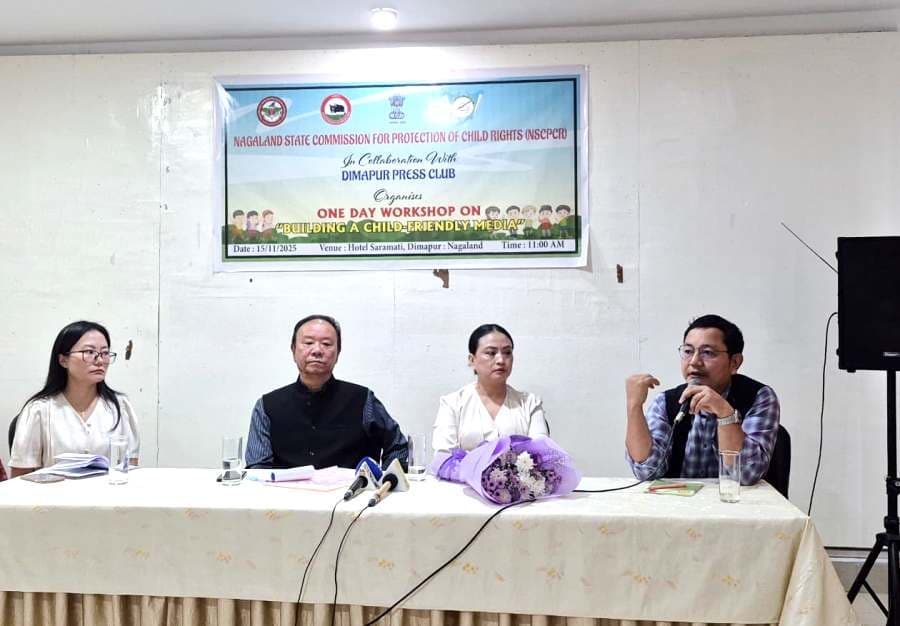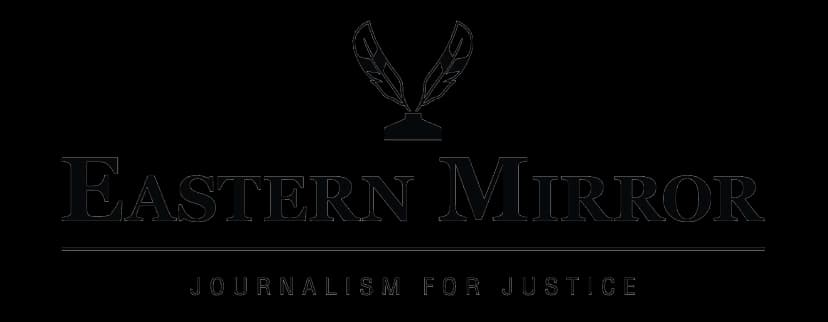SATURDAY, NOVEMBER 15, 2025
- Home
- 'Caution is conscience': Nagaland media told to protect children, not headlines
'Caution is conscience': Nagaland media told to protect children, not headlines
Workshop in Dimapur urges media to prioritise child safety, follow POCSO and JJ Act guidelines, and avoid harmful, sensational reporting.
Share

DIMAPUR — ‘Children are not headlines. They are lives—fragile, formative and full of promise. When their stories are told with empathy, journalism becomes a public trust rather than a pursuit of sensationalism.’ This reminder was delivered by Imlimongla, Special Public Prosecutor of Fast Track Special Courts, Dimapur, during a one-day workshop on ‘Building a child-friendly media’ held on Saturday.
Organised by Nagaland State Commission for Protection of Child Rights (NSCPCR) in collaboration with Dimapur Press Club (DPC), the workshop underscored the media’s responsibility as the fourth pillar of democracy.
Imlimongla urged journalists to recognise that they do not merely report on society but help shape it—and that child-centred reporting must prioritise healing, accountability and the best interests of the child.
Stressing the ethical responsibility of newsrooms, she said that how the media covers children—whether victims, witnesses or those in conflict with the law—is a reflection of a society’s moral maturity.
A single headline, image or hashtag, she cautioned, can protect a child’s dignity or destroy it. Laws such as POCSO, the Juvenile Justice Act and constitutional protections require the media to choose protection over exposure.
Also read: No better chance may come’: Naga Common Platform steps up peace plea
Citing Articles 14, 15(3), 21 and 39 of the Constitution, she observed that despite these safeguards, the rush for clicks and “breaking news” often leads to harmful disclosures. “This is not criticism, but a reminder that the privilege of the microphone carries the burden of conscience,” she said.
When a child becomes the centre of a story, she added, the usual rules of journalism must yield to deeper ethics and empathy.
The media must use the term “child in conflict with law” rather than “juvenile criminal,” the special prosecutor asserted.
Guidelines issued by NCPCR and NHRC, she said, also stress avoiding sensationalism, ensuring informed consent, consulting child-rights experts and focusing on prevention, rehabilitation and justice rather than shock value.
A child, she quoted the commissions, “is not a story to be sold—but a life to be protected.”
Online harm irreversible
In today’s digital environment, the risks are magnified, she warned. A single video can travel the world within seconds, and deleting it does not undo its damage.
Online intermediaries, she said, must preserve evidence and report child sexual abuse material (CSAM) to authorities—treating it as criminal evidence, not content.
Read more: ‘Where everyone belongs’: Nagaland churches prepare to mark Persons with Disabilities Sunday
She pointed to the Bharatiya Nyaya Sanhita, 2023, stating that its provisions also apply when misleading or sensational reporting harms children.
Section 353 penalises content likely to cause public harm, Section 356 covers defamation, and Section 196 deals with incitement.
Imlimongla urged media houses to adopt child-protection editorial policies; train all staff on POCSO, the JJ Act and BNS; appoint a child-rights focal person; partner with NSCPCR and CWCs; and display the child helpline number during child-related reporting.
A child-friendly newsroom, she said, must follow strict protocols—no names or photos of children, legally vetted content and fact-checked, dignity-centred storytelling.
“Caution is not censorship, but conscience,” she stressed. “You can expose failing systems and institutions while still shielding a child from public gaze. That is courage with compassion.”
Media must resist haste
Speaking at the workshop, Dr. Moalemba Jamir, Associate Editor at The Morung Express, said that, often, silence protects a child’s dignity and future better than any story.
In a society where well-meaning individuals and groups quickly issue public condemnation, even a locality or school mentioned in passing can identify a child, particularly in the age of viral social media, he said.
Also read: Mountains to Mangroves: Nagaland’s REDD+ pilot takes root
The media must therefore set a careful tone, resist pressure to publish prematurely and ensure that protecting the child’s identity remains the central principle.
Child protection, he added, is not merely a regulatory requirement but a moral responsibility. A child-friendly media must create an environment where young lives can grow free from unnecessary exposure.
NSCPCR Chairman Aun Hangsing acknowledged the media’s role as a cornerstone of society and urged journalists to provide accurate, balanced information, as false or biased reporting can cause significant harm.
He highlighted the high number of POCSO cases in Dimapur, Niuland and Chümoukedima, emphasising the media’s crucial role in raising awareness.
While the commission was established in 2013, he said that it became fully active only in 2023 and has since been working to ensure proper implementation of child-protection laws.

